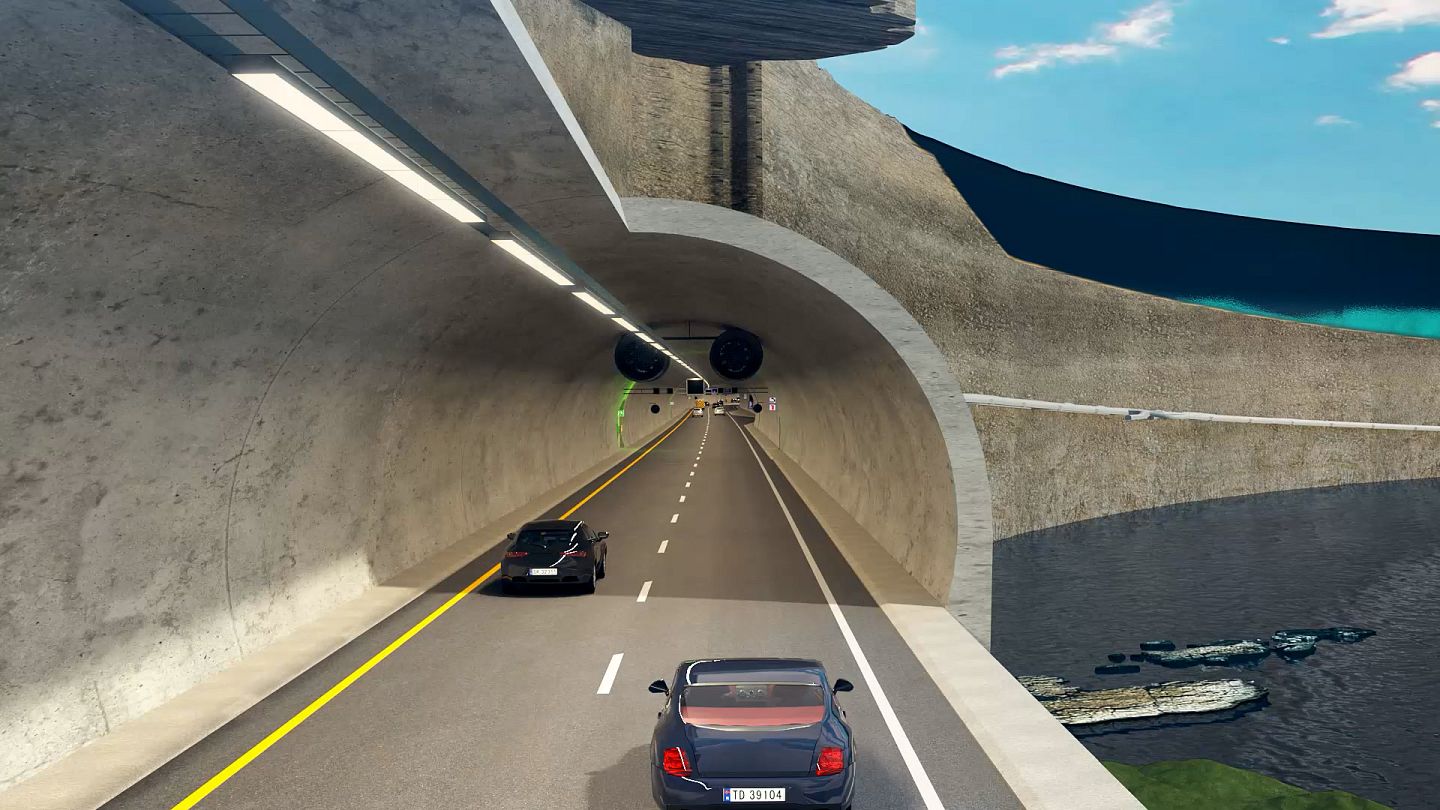Norway is building the world's longest and deepest underwater tunnel beneath the fjords.
Rogaland, when its fixed connection is completed, will be approximately 26.7 kilometers long and will reach a depth of 390 meters at its deepest point under the sea.
Norway is building the world's longest and deepest underwater tunnel, one of Europe's most ambitious engineering projects, which is expected to strengthen the country's transportation connections and infrastructure. The record-breaking Rogaland fixed connection - or Rogfast - will be approximately 26.7 km long and will reach a depth of 390 meters at its deepest point under the sea. When the tunnel connection is completed in 2033, it will reduce travel time between Norway's two largest cities, Stavanger and Bergen, by 40 minutes. The Rogfast project, nearing halfway through construction, is part of the main European E39 highway that runs along the western coast of the Scandinavian country. This highway, connecting cities such as Kristiansand, Stavanger, Haugesund, and Bergen, is expected to replace ferry crossings, making travel smoother, according to Norway's road authority behind the project. Oddvar Kaarmo, project manager for the Rogfast project at the Norwegian Public Roads Administration, stated to Euronews Next, "Stavanger is Norway's fourth largest city, and Bergen is the second largest, so we hope this project can also shorten travel time for workers commuting to Stavanger or Bergen on a daily basis." One of the key design features of the new underwater highway is its central point, which includes a spur connecting Norway's smallest municipality, Kvitsøy Island, to the main tunnel below the rock. The Rogfast tunnel will have two lanes of traffic in each direction. Under Kvitsøy, the lanes merge with two roundabouts constructed 260 meters beneath sea level. Kaarmo said, "We have previously made roundabouts in tunnels. However, this may be one of the oldest constructions where we have two roundabouts in a cross-section of a tunnel. As far as I know, I have not seen two roundabouts in one cross-section in a tunnel before." The two roundabouts beneath the island will ensure traffic flow even when one of the lanes is closed. "If something happens and we have to close part of the tunnel, we can continue to operate the tunnel using a single pipeline, and traffic can be managed through a single pipeline in each direction." The twin-tube structure is also a safety measure. Kaarmo explains, "If a truck or a lorry catches fire in front of you and you can't turn back and exit, you can look for these green doors with exit signs... and walk to the other pipeline of the tunnel. We have a camera system that allows us to know exactly where you are. We can also pick you up and get you out of the tunnels." Norway's tunneling expertise The Rogfast project, being built in phases at a cost of 25 billion Norwegian Kroner (2 billion euros), is currently about halfway completed after its groundbreaking in 2018. Kaarmo noted, "On the northern side, about 65% of the tunnel has been produced, and then only the production of the tunnel remains, such as drilling and blasting. At the southern end in Randaberg, about 45% is completed." Unlike the Fehmarn Belt fixed connection currently under construction between Germany and Denmark, which uses modular construction methods, Rogfast is being directly blasted and drilled through solid bedrock, a method used by Norway to ensure stability and durability under water pressure. Kaarmo added, "You are passing through solid rocks. There is this distance between the roof of the tunnel and the seabed. According to our regulations, it is 50 meters. So, you are progressing beneath the seabed. We have underwater highway tunnels with this structure. In the new tunnel between Germany and Denmark, however, boxes are being laid, the boxes are assembled, and the seabed is not being accessed as we do in Norway." "We produce tunnels quite cheaply in Norway. We have about 40 underwater highway tunnels in Norway and are familiar with their construction. Therefore, generally building an underwater highway tunnel is easier and cheaper than building a bridge to the same island," he said. The Rogfast fixed connection is planned to be completed by the summer of 2033. Kaarmo stated, "[The tunnel] will help seafood producers reach the market better without ferries." "Norway's western coast is a region that tourists frequently seek. For example, Bergen. We have a lot of tourists in Bergen. When we implement this road project that will allow us to reach Bergen in a shorter time, it is highly likely that tourists will show even more interest in this region of Norway than they do today." The Norwegian Public Roads Administration estimates that 13,000 trips will be made daily through the new tunnel by 2053. For more information on this news, you can watch the video above.


